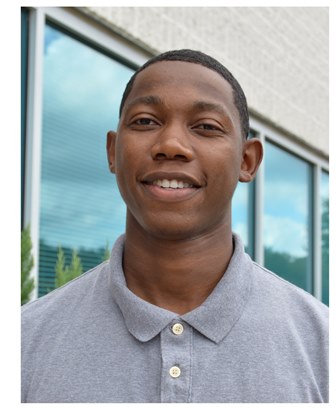
Friday, October 19, 2018
Jordan Wesley of Mitchellville, Md. received his undergraduate degree in computer science from UMES this past December, launching him on a path to a post-graduate internship with the Johns Hopkins Applied Physics Lab.
Wesley, who played baseball for two years and graduated with a 3.4 grade point average, currently is enrolled at the University of Maryland Baltimore County, where he is pursuing a graduate degree in information systems.
The 12 weeks he spent as a summer intern at the Applied Physics Lab paid dividends. He continues to work part-time at the Laurel, Md. facility while going to school.
The internship “has been life-changing,” Wesley said. “It impacts you (more) than you can imagine. It definitely opened a lot of doors.”
A combination of factors brought Wesley and the Applied Physics Lab (APL) together. The lab offers what it calls the APL Technology Leadership Scholars summer intern program.
Known as “ATLAS,” the program works in partnership with historically black institutions, Hispanic-serving institutions and tribal colleges and universities to connect their students in science, technology, engineering and math disciplines with the lab’s “wide selection of technical challenges and dynamic work environment.” Interns attend workshops and events, hone interviewing and presentation skills, work closely with executive leaders and “explore potential career pathways” at the lab.
UMES’ Jim Bresette heard about ATLAS from a professional acquaintance employed at the lab, who shared that she noticed no UMES students applied for internships in 2016 and 2017.

Bresette relayed that observation and details about the program to colleagues who work with the university’s top students, including math department chairman Rob Johnson.
Johnson calls Wesley “a very hard-working, determined young man.”
“Early in his time here,” Johnson said, “he exhibited a passion for learning and computer science. He listened and was very advisable … traits he probably learned from his college baseball activities.”
Johnson’s colleague Dr. Urban Wiggins said Wesley was “an extreme pleasure to instruct. His ability to comprehend new subject matter quickly was amplified by performing his own outside research.”
Facing a Dec. 31 (2017) deadline, Wesley scrambled to submit his application while finishing his final semester of study and preparing to graduate.
Bresette said “we are pleased to have this initial success. This year, our goal is to expand the number of UMES students selected as ATLAS interns.”
Wesley is developing and testing software to meet specific needs of the lab’s government sponsors. He said his mentors were flexible letting him choose “what path (I) want to take, what (I’m) interested in” while at the same time challenging him to think beyond his comfort zone.
“I’ve gotten an opportunity to try something new – to try and learn something new … by switching departments,” Wesley said.
“It can be a huge learning curve, learning on the spot,” Wesley said.
The Johns Hopkins Applied Physics Lab opened in 1942, when it “was created as part of a federal government effort to mobilize scientific resources to address wartime challenges,” a history on the facility’s website says.
The lab immediately took on “the task of finding a more effective way for ships to defend themselves against enemy air attacks. (It) designed, built, and tested a radar proximity fuze … that significantly increased the effectiveness of anti-aircraft shells … (and) later, ground artillery.”
That environment is where Wesley found himself working alongside top-flight professionals in 21st century “STEM” fields.
“The people you are surrounded by … are some of the most intelligent people you can image,” Wesley said. “It’s amazing to sit around them and listen, ask questions.”
The experience “has definitely taught me how to attack a problem and it’s accelerated my critical thinking skills.”
“They don’t treat you like an intern,” Wesley said. “They treat you like employee. I’m grateful for the opportunity.”

